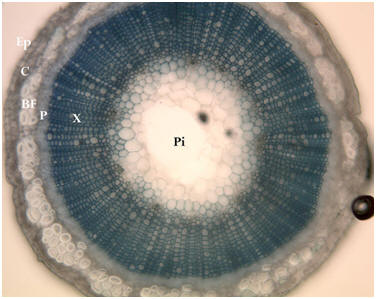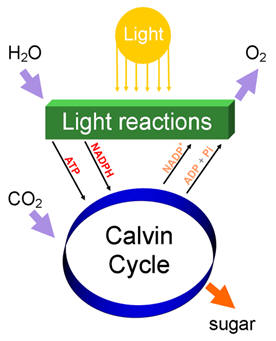Nutrition
Juniper like many other plants is autotrophic, which means it
produces many of the complex nutrients and sugars that it
consumes, through
photosynthesis. Photosynthesis is a process
that occurs within the chloroplasts, the majority of which
reside in the leaf regions. In the chloroplasts are the
chlorophyll (the green pigment of the plant that absorbs
different light rays) exchanges water, gas, and light energy in
a reaction into glucose (sugar), more water, and oxygen gas. The
glucose is the primary nutrient source for the plant; the sugars
are transported throughout the rest of the plant by the phloem.
But that’s just how they eat. What about when they get thirsty?
6CO2 + 6H2O + light E
à
C6H12O6 + 6O2
+ H2O
So
when Juniper becomes thirsty it doesn’t go to the kitchen and grab a
soda, instead it uses its roots. The roots of a plant absorb water
from its substrate, the water moves up the plant through the xylem,
or thin tubes. Well how can that be you ask? How does the water flow
up? Water has many fabulous characteristics, such as Transpiration
Adhesion Cohesion Tension, or TACT. These help water to flow from an
area of high water potential to an area of low water potential
without ever sliding back down. Just like magic!
Everybody loves the babies. Just how does Juniper make them? Or return back to the HOMEPAGE

